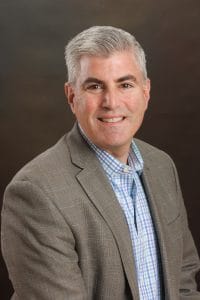If a modern day oncologist spent every day reading every single research paper published on cancer in a year, the doctor would have to read about 440 papers a day to keep up. Add in the time they take for in-person visits from patients — not to mention weekends — and managing this annual 160,000-plus paper overload in addition to the rest of their job is clearly impossible.
But not if you’re IBM’s Watson.
That’s exactly what the natural-language processing supercomputer does, and it showed in a study with the University of North Carolina. When tasked with determining a treatment for patients with a cancer diagnosis, IBM’s “Jeopardy!” champion-turned medical expert recommended the same treatment as doctors 99 percent of the time. Beyond that, in 30 percent of the cases, it found a treatment option the doctor had missed. It was able to do so because it had read through all those research papers a human doctor could never manage.
This kind of computational power is going to become essential as health care matures in the coming decade. Those 160,000 data points are nothing compared to the amount of information that’s going to be available to doctors by the medical Internet of Things (IoT). Instead of this deluge of IoT data swamping doctors, the result may prove to be the opposite. It could free them up doctors, and the healthcare industry may see an improvement in doctor’s bedside manner.
Goldman Sachs projects that health care IoT’s total savings opportunity is $305 billion, mostly by transitioning to remote monitoring of chronic disease management. Currently, chronic illnesses cost over $1 trillion a year in the United States. There are major cost savings to be had. But the primary benefit of medical IoT device adoption will be enhanced patient care. It’s proven that when doctors have easier access to medical information, they can perform their jobs better.
This happened when the federal government allocated $20 billion in incentives in 2009 to get doctors away from paper records and move to electronic health records (EHRs). Secure patient portal websites and apps followed that shared this information between medical facilities and patients. According to an article published in the Journal of Risk Management and Healthcare Policy, EHRs improve the quality of care, reduce medical errors and increase patient satisfaction. And doctors are also pleased to see app integration with EHRs. According to a Pricewaterhouse Coopers study, 79 percent of doctors reported that mobile devices help with coordinating care. And consumers already have adopted personal health IoT devices — 47 percent have fitness bands and 27 percent own a smartwatch.
On the flip side, it’s been proven in tests that IoT devices can improve care. France’s Lille Regional Teaching University Hospital implemented connected bedside terminals so health records could be updated automatically. It also replaced its phones and televisions with touch screens. This helped keep patients occupied and gave them more facetime with family members. But the screens had another benefit — instead of doctors occasionally peering out from behind a computer screen, they were able to collaborate with patients as they filled out EHR information together. Previous studies have shown that while EHRs improved care, it reduced eye contact between patients and doctors, which may hinder perceived bedside manner. In this case, IoT devices saved clinicians time and enhanced their ability to provide quality care.
A secondary effect of medical IoT device integration will allow doctors to collaborate with other staff and seek more seamless collaboration than ever before. A July study in Healthcare Informatics Research concluded that wearables and IoT will improve care coordination. The paper forecasts that one day, healthcare facilities will have digital health advisers, whose jobs will be to enable more coordinated care between clinicians based on information gathered from IoT devices.
It will be key with all of this that there are clear compliance standards so IoT can help doctors instead of hinder them. The Federal Trade Commission has said its focus is on how devices that are part of IoT can be secure, which will always be a high-ranking issue in healthcare. In addition, it is also important that these devices will be able to communicate with each other through standards and protocols so they can integrate with existing EHRs so clinicians can glean actionable data. Lastly, the latest mobile security technology should be considered to secure data transmissions from IoT and to protect these devices from being coopted for denial-of-service attacks.
As the medical IoT market grows, it is pushing the healthcare field toward a more integrated, intelligent future. Doctors will have more time to interact with patients and will have access to a world of medical records and peer-reviewed journals that will improve costs and quality of care. It’s very possible in the coming decades that these very high-tech devices will have a very old-fashioned result — bedside manner from doctors that rivals the era of home visits.
Jon Cohen is VP Product Strategy and Development at Synchronoss. He brings 22 years of IT Strategy and Solution Management experience focused on developing transformational technology solutions for enterprise clients in Financial Services, Healthcare, and Life Sciences industries. Jon is an experienced management consultant and IT strategy executive with expertise in IT transformation, enterprise architecture, and developing industry solutions that leverage market trends in Cloud and Big Data. He began his consulting career at McKinsey and Company after completing his MBA in Finance and Management at the Wharton School of the University of Pennsylvania.
The Editorial Team at Healthcare Business Today is made up of skilled healthcare writers and experts, led by our managing editor, Daniel Casciato, who has over 25 years of experience in healthcare writing. Since 1998, we have produced compelling and informative content for numerous publications, establishing ourselves as a trusted resource for health and wellness information. We offer readers access to fresh health, medicine, science, and technology developments and the latest in patient news, emphasizing how these developments affect our lives.









